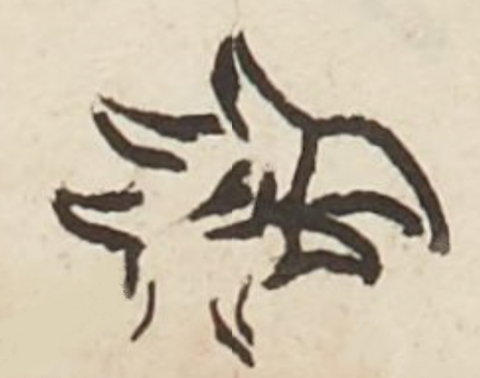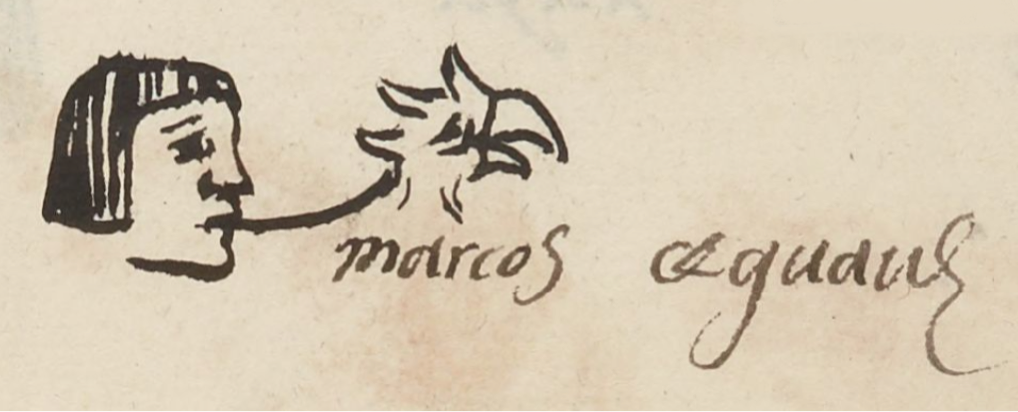Ce Cuauh (MH492r)
This black-line drawing of the simplex glyph for the date and personal name Ce Cuauh ("One-Eagle," attested as male in the contextualizing image, below) consists of the head of an eagle (cuauhtli) in profile, facing toward the viewer's right. The feathers on the back of the eagle's head are spiky, and its beak is open. The numerical notation for "One" is not shown visually; its only presence is in the gloss and in the fact that we only see one eagle head.
Stephanie Wood
This name comes from the tonalpohualli, the 260-day divinatory calendar. Calendrics were an important element in the Nahuas' religious views of the cosmos.
Here is an example of one step in the evolution of calendrical personal names, which were gradually dropping their numerical components. The absolutive (-tli) at the end of Cuauh has also fallen away, which is common in personal names. Absolutives will disappear, and sometimes they will be added when it is unexpected.
Stephanie Wood
marcos ceguauh
Marcos Ce Cuauh (or Cecuauh)
Stephanie Wood
1560
Xitlali Torres
eagles, águilas, números, numbers, feathers, plumas

ce, one, https://nahuatl.wired-humanities.org/content/ce
cuauh(tli), eagle, https://nahuatl.wired-humanities.org/content/cuauhtli
Uno Águila, 1-Águila
Stephanie Wood
Matrícula de Huexotzinco, folio 492v, World Digital Library, https://www.loc.gov/resource/gdcwdl.wdl_15282/?sp=52&st=image.
This manuscript is hosted by the Library of Congress and the World Digital Library; used here with the Creative Commons, “Attribution-NonCommercial-ShareAlike 3.0 License” (CC-BY-NC-SAq 3.0).








